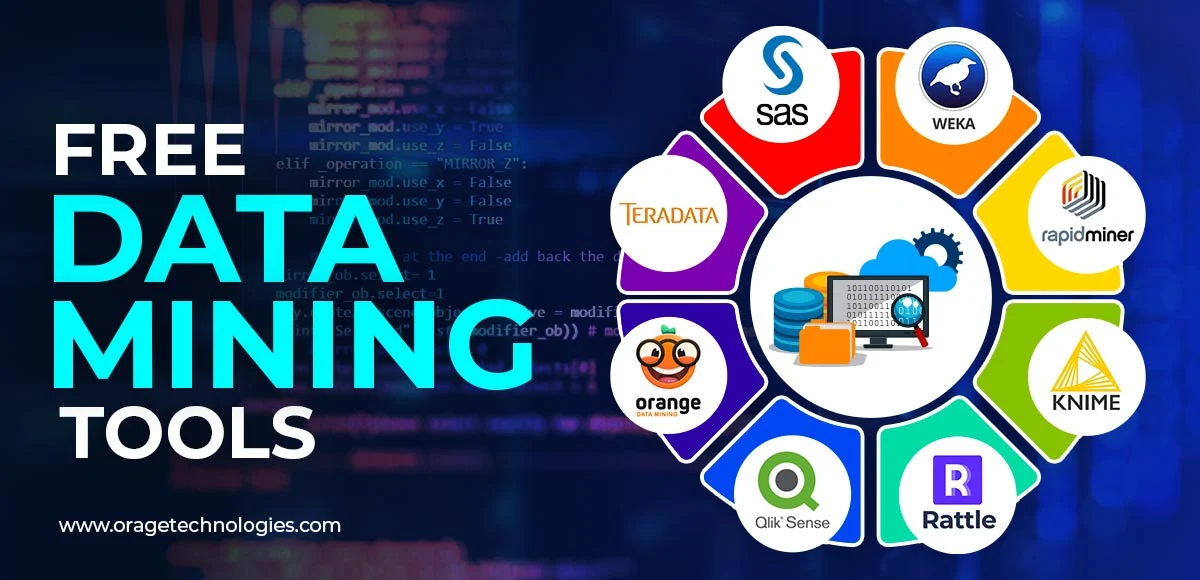
Divya Stuti, with over 5 years of experience in Digital Marketing & Content Writing, has a knack for turning complex Marketing strategies, trends, and jargon...
Every company these days is generating tons and tons of data. But raw data on its own is useless. To make sense of it, we need data mining. In this blog, we’ll dive into the world of data mining, its benefits, and some of the best free data mining tools available today.
What is Data Mining?
Data mining is the extraction of useful information from large volumes of audit, raw data, records, or other information sources. You must picture it as searching for gold in the mine; only here, instead of the gold, one may discover hitherto unknown patterns helpful in understanding numerous phenomena ranging from consumers’ behavior, trends of stock shares, or fraudulence.
The objective of data mining is to transform data into us eful knowledge. Cutting normally employs the practices of statistics, machine learning, and database systems to identify information and forecast. This technique takes data from the past to help guess the future, locate relationships, and convey concealed patterns in an effort to improve our choices.
Benefits of Data Mining
Data mining presents numerous benefits for companies, for scholars, and for other organizations. Let’s look at some of its key benefits:
- Improved Decision-Making: Business intelligence enables decision-makers to find patterns within data, which makes it easier to make appropriate choices.
- Increased Efficiency: This is abrupt from the traditional method of searching for insights from data that takes a lot of time and resources hence employees can be assigned other important duties to handle.
- Cost Reduction: Using the predictive models with data analysis provides good results and does not let the company spend money on risks.
- Better Customer Insights: Marketing is also enhanced through data mining since the firm is able to identify customers’ needs and reach out to them better.
- Competitive Advantage: Every company that uses data mining can have an opportunity to achieve a competitive advantage by analyzing trends that are still unknown to competitors.
- Fraud Detection: Banks employ data mining to predict unusual behavior with the purpose of minimizing fraud and enhancing the level of protection.
Top 10 Free Data Mining Tools
With the knowledge of what data mining is and the benefits associated with it, it is about time we looked at some of the top free data mining tools to use in 2021. These tools assist specific professionals and firms in performing several data mining activities such as; Predictive modeling tools.
1. Weka
Weka is a powerful tool developed by the University of Waikato, New Zealand for data mining and knowledge analysis. This is actually software that has several provisions of machine learning for data analysis and as a tool for making prognoses. It offers tools like clustering, classification, and regression, feature selection as well as features for experts and novices.
Features:
- Easy to interact with and has a graphical and analytical display of results.
- Favorable to operations of data mining processes such as classification operation and clustering.
- Java writing makes it easy to integrate ADF applications with other Java applications.
2. RapidMiner
RapidMiner is an open-source data mining software that provides more than a few hundred algorithms for data preparation, machine learning deep learning, and text mining. It has a strong user base, meaning that the beginners are well assisted by the old-timers in the area.
Features:
- Meaning users are able to design workflows using the application without coding.
- Integrated versions of the models for use in predictive operations.
- The exploitation of data in groups of several kinds, including batch processing and GUI for several data management techniques.
3. KNIME
KNIME is an open-source data analysis tool that is widely used around the world. Its demonstrated workflow idea is based on the idea of modular ‘Building the overall data mining process as an executable workflow is as easy as placing icons representing steps on a canvas.’ Thus, it can work in synergy with other applications such as R and Python, which gives it a bonus for users of all levels.
Features:
- A subtype of the visual programming approach is based on the use of reusable parts.
- Larger integration with R and Python for additional data analysis.
- Sustainable working processes and the management of execution in large-scale production environments.
4. Rattle
Rattle is an open-source data mining application that provides the computational ability of R language. It is user-friendly and could be used by even new users apart from the data scientist.
Features:
- Provides a large amount of machine learning algorithms and powerful data mining capabilities.
- Includes histogram and box functionality which facilitate data representation and analysis.
- Integrated code tab feature that allows users to view their codes and create copies of codes.
5. Qlik Sense
Qlik Sense can be described as a BI system with extensive capabilities of data mining and data visualization. The solution allows users to quickly process data obtained from different sources and analyze patterns in them.
Features:
- Canvases that can be easily dragged and dropped into creating the wanted format of the dashboards.
- Additional capabilities of displaying data and discovering patterns.
- Analyzing big data with dynamic data visuals.
6. Orange
Orange is a mining tool that is based on open source and includes aspects such as machine learning and data visualization. The convenient GUI allows users to design data analysis processing flows by simply placing and linking the available widgets.
Features:
- Offers a set of additional tools for such applications as text mining, natural language processing, and network analysis.
- Some integrated environments also propose advanced Python scripting for specific analytical modeling.
- Enables users to work with data in such a way that they can have a look at exactly what the data looks like at any one time.
7. Teradata
Teradata is both a considerable data mining and data management architecture renowned for its scalability layers. This is practically applied in the big data warehouse information system for huge organizational data processing.
Features:
- Perfect for large business data processing and any data analysis in general.
- Comes with SQL support for data access and powerful analytical tools.
- Supports MAX 64 joins in a query.
8. H2O
H2O encompasses a predictive analytics environment and is an open-source solution for machine learning. It has a great reputation for its ability to quickly and easily deploy machine learning models into production.
Features:
- Accommodates a number of supplied learning algorithms, including supervised, unsupervised, reinforcement, and cognitive learning.
- Offers auto ML for things such as optimizing the strength of different parameters and choosing the best model.
- Interoperates with Hadoop, Spark, and Tableau for big data analytics.
9. Apache Mahout
Apache Mahout is a data mining tool that is designed to control scalability in machine learning applications. Deep learning is often used for creating recommendation engines and many other machine learning applications.
Features:
- Standardized algorithm solutions to be employed in a certain machine learning process.
- Library and functions for GPU optimization of the model.
- It can apply to different settings of programming languages.
10. SAS Data Mining
SAS Data Mining is a strong tool that enhances the work of data mining to be more easily understandable even to those who do not have technical backgrounds in the field. It provides data analytics for large data and model development for business decision-making.
Features:
- This hardware supports a distributed memory processing architectural model.
- Utilizes an intuitive graphic user interface for the layman to enable them to maneuver through the system without the bluster of a complex application.
- This may be applied to the areas such as fraud tagging and resource management.
Conclusion
Data mining plays a crucial role in the process of analyzing large data sets. Optimization makes it easier for organizations to make informed decisions, improve their customer satisfaction, and stand out in the market. Because there is a large number of free tools, data mining can be tried with no technical experience from both business and individual people.
Thanks to Weka, RapidMiner, KNIME, and others, people can begin the process of mining for patterns, trends, and relationships within data and therefore become more efficient in their decision-making. Firstly, we have the basic set of tools that, irrespective of your level of data science experience, will be useful if they are leveraged to the appropriate extent.
Begin your journey towards data mining right now and uncover the secret potential stored in your information!
Frequently Asked Questions
1. What is a data mining tool?
A data mining tool is software that helps analyze large datasets to find patterns, trends, and useful information for decision-making.
2. What are the types of data mining tools?
Types include classification, clustering, regression, association, and visualization tools for analyzing and interpreting data.
3. Is data mining in demand?
Yes, data mining is in high demand as businesses rely on data to make informed decisions and predict future trends.
Also Read: 7 Best Data Management Tools

Divya Stuti, with over 5 years of experience in Digital Marketing & Content Writing, has a knack for turning complex Marketing strategies, trends, and jargon into interesting and easy to digest blog posts. Whether she’s breaking down the SEO, Social Media or decoding campaigns, Divya knows how to make marketing feel exciting and easy to understand. Armed with a sharp eye for strategy and a storyteller’s instinct, she writes with clarity, creativity, and just the right dose of wit.
More Posts

